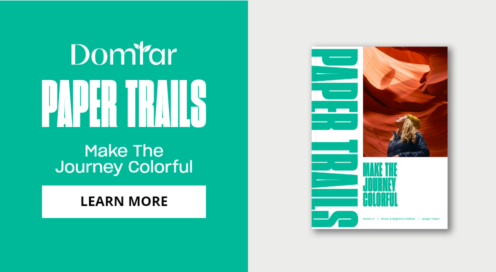RGD Members weigh in on the Town of Erin logo controversy

We asked Members of the RGD from across the country to share their opinions on the new Town of Erin Logo, created by Trajectory Brands Inc. The design has resemblances to other logos and it seems to closely resemble a Shutterstock icon. Business owners have also shared views on the level of uniqueness a logo should have and when similarities become excessive.
This piece was inspired by the RGD president Nicola Hamilton's post on Linkedin. Her take on this situation is that “Rebranding is hard because change is uncomfortable. Involving the community that will adopt the change is never a bad idea. Asking good questions about how a designer came to their solution is better than critiquing the final product."
If you have a different take on this situation and would like to share your thoughts, contact the RGD at president@rgd.ca.
Ashe Green RGD, Designer & Creative Director at Hijinks Design Agency Inc.
I’d be foolish not to acknowledge that client-designer relationships can be complicated. It's easy to critique a logo based solely on its visual elements, but design projects are shaped by the unique personalities, objectives and constraints of both the client and the designer. In the case of the Town of Erin's rebrand, the community's outrage seems to be driven by the logo resembling a stock image. But this risk, while unfortunate, is more familiar than most would like to admit.
I’m often doing a dance between a simple mark and finding something original. It can often feel like “it’s all be done before”. Sometimes we think we’ve hit gold only to feed the mark into Google or the Global Brand Database and there’s a near-exact mark staring back at us. Obviously a logo’s individuality is important, but there are various criteria we consider if this happens. Is the similar logo for the same industry? Are the two in the same country? What can we change to set the logo we are creating apart from the others? Often it comes down to being creative with your client’s story and playing up their history. Sometimes it can feel like we’re grasping at straws, but often the client is simply blown away by the attention to detail and how heard they feel.
Total uniqueness is an unrealistic goal in a digital world where thousands of logos are created every day. Many symbols (like leaves, circles and hearts) have meanings that resonate across cultures and are used widely as a result. In the Town of Erin’s case, incorporating green hues and foliage to symbolize their roots, agriculture, nature and their sustainability goals is sensible, but the backlash came from the perception that the design wasn’t unique enough to warrant the price tag.
So, how similar is too similar? If a logo bears a strong resemblance to an existing logo, particularly one within the same industry or geographical region, it runs the risk of confusion. A logo that looks too similar to others, especially stock images, risks undermining the brand’s credibility and giving the impression that the design does not reflect the time, effort or investment made. For a logo to resonate, it needs to strike a balance between using recognizable visuals and standing out in a way that makes the brand memorable and meaningful.
The reality is that we frequently face limitations during the creative process. In this case, while the resemblance to a stock image is a valid criticism, we need to consider that the design agency may have presented a variety of alternatives that weren’t accepted by stakeholders. While we don’t know the full story behind their process, it’s possible that the final product represents more of a client-driven vision than a designer’s preferred outcome. We see it often.
John Furneaux RGD, Principal at B3 Strategy in Toronto
When it comes to answering the question “How close is too close?”, we first need to understand whether the new work was meant to be a tribute or inspired by something or whether it was either lazy or deceitful. For example, Peter Saville’s well-known design for the cover of New Order’s 1981 album, Movement, is almost a direct replication of the 1932 Futurismo Trentino exposition poster –it’s an homage that never sought to hide its source of inspiration.
Lazy design has been with us for a long time. It started off with the use of clip art and now we have stock images and graphic sites that provide us with anything we could ask for, from an illustrated flourish to a complete logo. There is nothing inherently wrong with these resources if designers use them as building blocks for solutions to their clients’ needs. But we must always remember that our clients are hiring us to develop something for them that is unique.
Today, the rise and ubiquitousness of websites selling easily modifiable graphics has increased the complexity of what it means to “copy”. Once you have paid the license for the stock graphic, you are legally allowed to do anything you want with it, even if that means changing nothing. It’s more an issue of ensuring we provide value to our clients, not giving them something that they themselves could pull off the internet and use. This hasn’t had enough discussion within the design community and, with the rise of AI-generated content, will become far more important to address. Who’s to say that generative AI within design software wouldn’t produce similar graphics across a wide range of projects when asked to? And how would we then determine what’s unique and what’s too similar?
There will always be designs that look and feel like something you have seen before – there are sometimes only so many ways of expressing a specific concept. So, ask your team members where they got their inspiration from. And if a team member makes a comment about your design feeling familiar? Do as much research as possible before presenting it to the client. Google image search, trademark databases and even the Logo Lounge website are all easily searchable. These simple steps can help you prevent embarrassing (or worse) situations from arising when the work becomes public.
Michelle Hopgood RGD, Creative Director & Information Specialist, Hopgood Creative
When is a logo too similar? If design experts struggle to see the difference between a designed mark and a stock image outside of colour, then I deem this as too similar. In my opinion, a logo needs to be unique enough to stand on its own without its originality being called into question. Of course, it is always possible to design brands that bear a likeness to one another, however, in my opinion, being nearly identical is very rare. Logos can be similar if they are not direct competitors or they are in different industries. That being said, mistakes do happen, but it is up to us, as designers, to advise, redesign and position our clients so that they don’t end up in a legal mess.
I acknowledge that brand design is a complex process, and creating a unique identity continues to be ever more challenging. I am most concerned about the legality of a brand so similar to a stock image that its origin is called into question. Additionally, I wonder how this similarity will affect trademarking for any client in this situation. Almost all stock image licensing terms explicitly prohibit asset usage in logos, service marks, brands or trademarks; a few examples of websites that include this exclusion are iStock, Shutterstock, Adobe Stock, Unsplash and Noun Project. Therefore, it seems unlikely that a client or designer could receive trademark rights to a brand that is nearly identical to a stock image.
As a designer, I believe strongly in the ethics and integrity of the work produced by myself, collaborators and clients. The RGD’s Code of Ethics is a major part of why I am an RGD because I believe it holds us to a higher standard and ensures that designers are accountable to themselves and their clients. As such, in a situation like the one the Town of Erin faces, I believe that this brand should have been revisited once the similarity to the stock image was discovered, whether that was pre- or post-release to the public.
Of course, it is easy for me to pass judgment, but I can only hope that the designers who worked with the Town of Erin have advised their client about the usage of this brand and the possible ambiguity around legal concerns.
Kelly Kingdon RGD, Creative Principal & Partner, Think3 Creative
As a co-founder of an agency that specializes in branding in both the small business and corporate sectors, we recognize that our clients approach us as experts. As such, our responsibility is to assist with curating their vision into a cohesive visual identity that embodies uniqueness and represents their company values and goals. One of the most significant challenges in branding is the risk of similarity with existing brands. An identity too close to others can lead to confusion among consumers, dilute a brand’s potential, hinder brand loyalty and ultimately create barriers for legal licensing and copyright.
To reduce these risks, our process involves extensive research into existing brands within our client's industry. This includes analyzing competitors and ensuring that branding elements—such as colour palettes, logos and messaging — are not only unique but also resonate well within the local context. If our process notes coincidental closeness to brands already in use and images in the stock domain, we revisit and curate redirection before presenting any concepts to the client. Releasing a final product to our clients that undermines these fundamental responsibilities is a failure on our end as branding professionals and would be unacceptable to our business principles.
Tag
Related Articles














